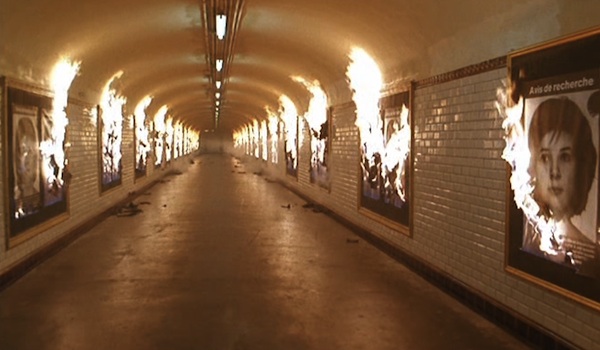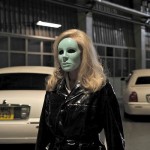The Lovers on the Bridge Review
With a production history as troubled as just about any movie this side of Apocalypse Now, Leos Carax’s The Lovers on the Bridge is a startling depiction of love at its most foolish. Juliette Binoche’s Michele and Denis Lavant’s Alex are far from a perfect match—he’s an addict, she’s going blind, and neither has a home or a steady job—but their affair is passionate, and each of them end up becoming dependent on the other; Michele requires Alex to help her see, while Alex doesn’t want to live if not in her warm embrace. Such love, as true as it might feel in the moment, can end up being destructive. That’s what Carax so brilliantly captures here. These are deeply flawed people who are preventing the other not just from thriving, but also surviving.
The film is based on and around the Pont-Neuf bridge in Paris, where Alex and an older gentleman, Hans (Klaus-Michael Grüber), call home. It takes place during a two year stretch highlighted by the bicentennial celebration of France’s Bastille Day when the Pont-Neuf was closed for repairs. The relationship between Alex and Michele doesn’t begin cute (a harbinger of things to come); She first sees him just after he passes out in the street and gets run over by a car. She ends up stealing his spot on the bridge, much to Hans’ chagrin (he demands she leave at every turn), but considering her degenerative eye disease, Alex doesn’t have the heart to force her out.
Their interactions are initially casual at best. They talk a little. She’s an artist and tries to draw him. There’s one fateful night (the film’s best scene and one of the best I’ve seen in a long time) when they get drunk and dance along the bridge will music blares and fireworks completely take over the night sky. It’s at this point that Alex begins to really feel strongly for Michele. As her sight deteriorates, she begins to feel the same. Alex is startled, however, to suddenly find posters of Michele’s face plastered around the city. They said her family was looking for her and a new medical procedure might restore her sight.
Carax had secured the real Pont-Neuf for ten days of traffic-free filming, but he felt he needed more and elected instead to create a replicate bridge. This meant The Lovers on the Bridge would be crazy over-budget, which led to a gap of eight(!) years between the film’s completion and its release in American theaters. While I have no doubt this caused the film’s financiers a ton of stress, it’s hard to argue with the final result. Not only does the bridge look totally authentic, it’s also a very unique setting and full of character.
It’s likely you’ve never seen Juliette Binoche like this before. Harried and childlike, she has the look of someone who, even at a young age, has gone through enough shit that she’s content to wave the white flag of life’s surrender. Lavant, too, has the face and the nimbleness of a child, and behaves with the recklessness of someone too immature to succeed at life or love. The Lovers on the Bridge, then, is ultimately a story about youth and the mistakes and twists of fate that cause us to fall. While most films (especially Hollywood productions) chronicle their protagonists’ rise back up, Carax has something a little less conventional in mind.
The Lovers on the Bridge is a little long in the tooth, but it does feature a scene as marvelous as any since. Just as Michele and Alex start to forge an emotional connection, France celebrates a national holiday. As fireworks completely transform the night sky, these lovers dance, drink, and steal a boat. It might sound ordinary, but I promise you’ve never seen anything like it. It’s the highlight of an already great film, which, I suspect, is a great introduction to the talents of one Leos Carax.
















